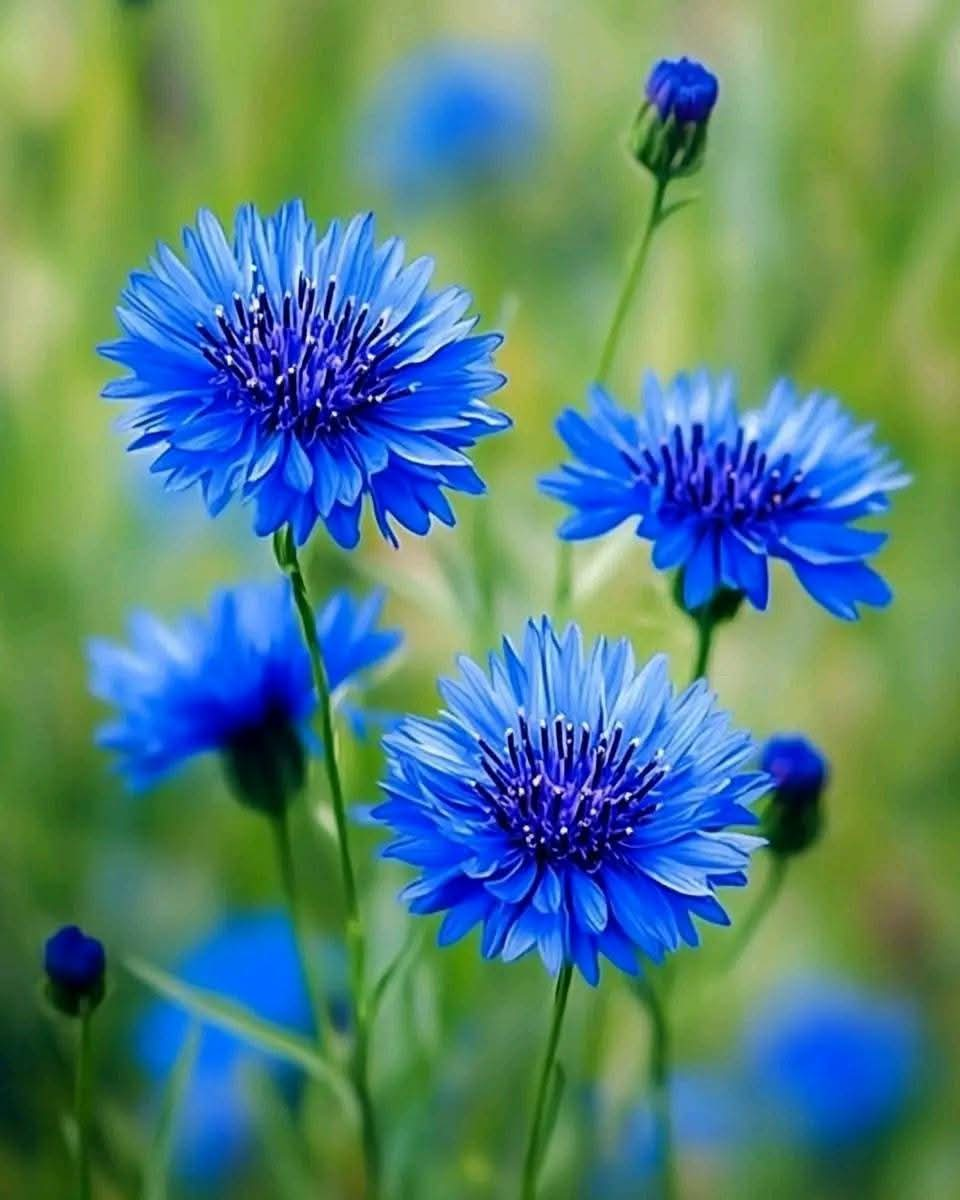The blue cornflower, also known as bachelor’s button, is a captivating wildflower renowned for its vivid azure blooms. A staple in cottage gardens, wildflower meadows, and bouquets, this delicate yet resilient plant holds a timeless appeal. Its vibrant blossoms not only enhance any landscape but also attract pollinators, making it a gardener’s favorite.
Why Blue Cornflowers Are Special
Vivid Blue Blooms: The intense blue hue of cornflowers is rare in the plant kingdom, making them a standout in any garden.
Pollinator-Friendly: Bees, butterflies, and other pollinators are drawn to their nectar-rich flowers.
Versatility: Perfect for wildflower meadows, mixed borders, or as a stunning cut flower.
Easy to Grow: Cornflowers are hardy and thrive in a variety of conditions, making them ideal for beginner and experienced gardeners alike.
Characteristics of Blue Cornflowers
Height: Typically grows between 12 to 36 inches tall.
Blooms: Dainty, fringed petals form round, bright blue flowers.
Foliage: Thin, gray-green leaves complement the vibrant flowers.
Growth Habit: Upright, clump-forming annual that self-seeds readily.
How to Grow and Care for Blue Cornflowers
Light
Cornflowers thrive in full sun, requiring at least 6 hours of direct sunlight daily.
Insufficient light may lead to leggy growth and fewer blooms.
Water
Water moderately, allowing the soil to dry out between watering sessions.
Avoid overwatering, as cornflowers prefer slightly dry conditions once established.
Soil
Plant in well-draining soil with average fertility.
Cornflowers tolerate a wide range of soils, but they thrive in neutral to slightly alkaline soil.
Temperature
These flowers thrive in temperate climates with cool to moderate summers.
They can handle light frosts but struggle in prolonged heat or humidity.
Fertilizer
Minimal fertilizer is required. Over-fertilization can lead to excessive foliage growth at the expense of blooms.
Use a balanced, all-purpose fertilizer sparingly during the growing season.
Planting Blue Cornflowers
When to Plant:
Sow seeds directly in the garden in early spring or late fall for blooms the following year.
For earlier blooms, start seeds indoors 4-6 weeks before the last frost.
How to Sow:
Prepare the soil by loosening it and removing weeds.
Sow seeds thinly and cover with a light layer of soil (about 1/4 inch deep).
Spacing:
Space plants about 6-12 inches apart to allow good airflow and prevent disease.
Germination:
Seeds germinate in 7-10 days in temperatures of 60-70°F (15-21°C).
Tips for Healthy Cornflowers
Deadheading:
Remove spent blooms regularly to encourage continuous flowering.
Support:
In windy areas, provide support for taller plants to prevent them from toppling.
Pest and Disease Control:
Cornflowers are relatively pest-free but may occasionally attract aphids. Use neem oil or insecticidal soap if needed.
Self-Seeding:
Allow some flowers to go to seed for natural reseeding and blooms in subsequent years.
Creative Uses for Blue Cornflowers
Cottage Gardens:
Pair cornflowers with other traditional blooms like foxgloves, hollyhocks, and daisies for a classic cottage garden look.
Wildflower Meadows:
Combine cornflowers with poppies, yarrow, and black-eyed Susans to create a pollinator-friendly wildflower meadow.
Cut Flowers:
Their long stems and vibrant blooms make cornflowers an excellent choice for floral arrangements.
Edible Flowers:
Cornflower petals are edible and can be used to garnish salads, desserts, or cocktails.
FAQs About Blue Cornflowers
Are blue cornflowers annuals or perennials?
Blue cornflowers are typically grown as annuals, but in mild climates, they can behave as short-lived perennials.
Can I grow cornflowers in containers?
Yes, cornflowers grow well in containers. Ensure the pot has good drainage and is large enough for the plant to develop.
When do cornflowers bloom?
Cornflowers bloom from late spring to early summer. Deadheading can extend their blooming period.
How can I use cornflowers as a natural dye?
Their petals can be dried and used to create a natural blue pigment for crafts or dyeing fabric.
The Symbolism of Blue Cornflowers
Cornflowers symbolize hope, love, and prosperity. In some cultures, they represent resilience and endurance, as they continue to thrive in challenging conditions. Their vibrant blue color often signifies loyalty and affection, making them a thoughtful gift for loved ones.
Bring the Charm of Cornflowers to Your Garden
With their stunning azure blooms and easy-care nature, blue cornflowers are an excellent addition to any garden. Their versatility, whether as a pollinator-friendly plant, a striking cut flower, or a centerpiece in a wildflower meadow, ensures they’ll capture attention and admiration.
Embrace the timeless beauty of blue cornflowers and let their delicate, cheerful blooms transform your garden into a vibrant haven. 🌸
